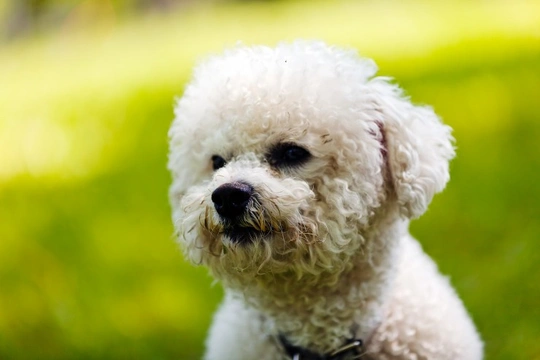
Corneal lipidosis in the Bichon frise
The Bichon frise is one of a number of small, fluffy white dog breeds that are very popular in the UK and that make for engaging, very affectionate little companions for people from all walks of life.
They are usually lively, playful and outgoing as well as loving spending time curled up on the sofa with their families, and the breed as a whole also tends to be long lived and healthy in the main part.
However, when it comes to hereditary health problems, the Bichon frise breed as a whole has a fairly long list of conditions that present in dogs of the breed regularly enough to be considered to be of concern for the breed as a whole. As well as the main list of hereditary Bichon frise health problems, there are also a number of other conditions that have been flagged as occurring in the Bichon (and some other breeds) more than most; and one of these is called corneal lipidosis.
Corneal lipidosis affects the dog’s eyes, and occur when deposits of cholesterol build up in the eye itself. This is actually relatively common across dogs as a whole, particularly older ones – and often, causes no problems at all. However, any change or development that affects your dog’s eyes is something that needs investigation, and cornel lipidosis is no different.
In this article we will talk about corneal lipidosis in the Bichon frise in more detail, examining why the issue occurs, how to spot it, and what it means for affected dogs. Read on to learn more.
What is corneal lipidosis?
Corneal lipidosis is the name for a condition in which deposits of cholesterol build up in the dog’s eye, which may cause pain or impair their vision – although this is not always the case.
There are three main underlying factors that lead to corneal lipidosis in dogs, which are as follows:
- As a secondary complication of corneal dystrophy.
- Due to corneal degeneration, which can generate a bodily response that results in cholesterol deposits building up within the eye. This form of corneal lipidosis is most common in elderly dogs.
- High cholesterol levels, which in turn impacts on other things due to excess cholesterol deposits being present within the body as a whole.
What sort of dogs are most prone to developing corneal lipidosis?
The Bichon frise is just one of several dog breeds that are more commonly diagnosed with corneal lipidosis than most others, and we aren’t quite sure why this is. Interestingly, none of the three underlying factors that most commonly lead to corneal lipidosis in dogs are ones that we commonly associate with affecting large numbers of Bichon Frise dogs.
However, the fact that corneal lipidosis occurs more often in the Bichon than most other breeds indicates that the breed has elevated risk factors for it, and potentially, a hereditary predisposition to high cholesterol within some breed lines.
What are the symptoms of cornel lipidosis in the Bichon frise?
Corneal lipidosis affects a reasonable number of dogs as they get older, and it is often very mild and pain-free – causing no outward symptoms and not bothering the affected dog at all. This does of course mean that you won’t be able to spot symptoms of the condition at home!
However, if significant amounts of cholesterol deposits build up within your dog’s eyes, you may be able to spot changes in the eyes themselves. This might take the form of spots, flecks or other occlusions on the eyes themselves, or signs that something is obscuring your dog’s vision.
If your dog squints, has problems seeing things clearly or otherwise indicates that something is occluding their eyes, corneal lipidosis is one potential cause. The condition isn’t always painful for affected dogs, but it can be – and so signs of pain or discomfort in and around your dog’s eyes are also something to keep a look out for.
When you take your dog along to the vet to be checked out, they will examine your dog’s eyes and might also run blood tests to see if your dog has high levels of cholesterol, which helps to inform their diagnosis.
If your vet isn’t sure or the condition is very advanced or complex, your vet might also refer your dog to a specialist veterinary ophthalmologist for further investigation.
What can be done about corneal lipidosis in the Bichon frise?
Unless corneal lipidosis is affecting your dog’s eyesight or causing them pain, your vet will probably leave it alone because it won’t be doing any harm. However, they will want to investigate and try to find out why the issue arose in the first place, such as if your dog has high cholesterol, which can cause other problems in its turn.
If the cholesterol deposits are impairing your dog’s vision, your vet might decide that they should be removed, which will usually be performed by a specialist veterinary ophthalmologist. However, if high cholesterol caused the deposits and this isn’t brought under control as well, the issue may potentially arise again in the future, even after surgery.



